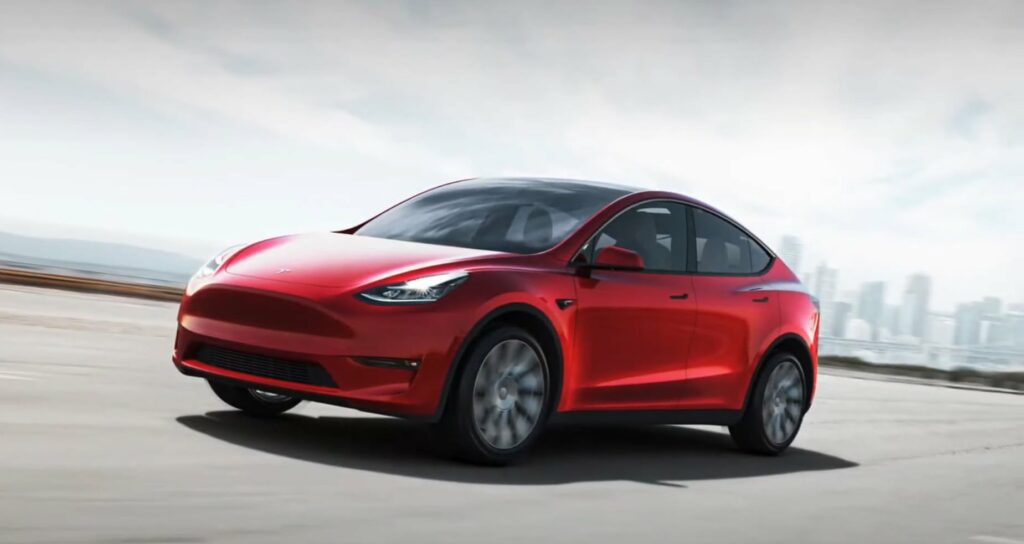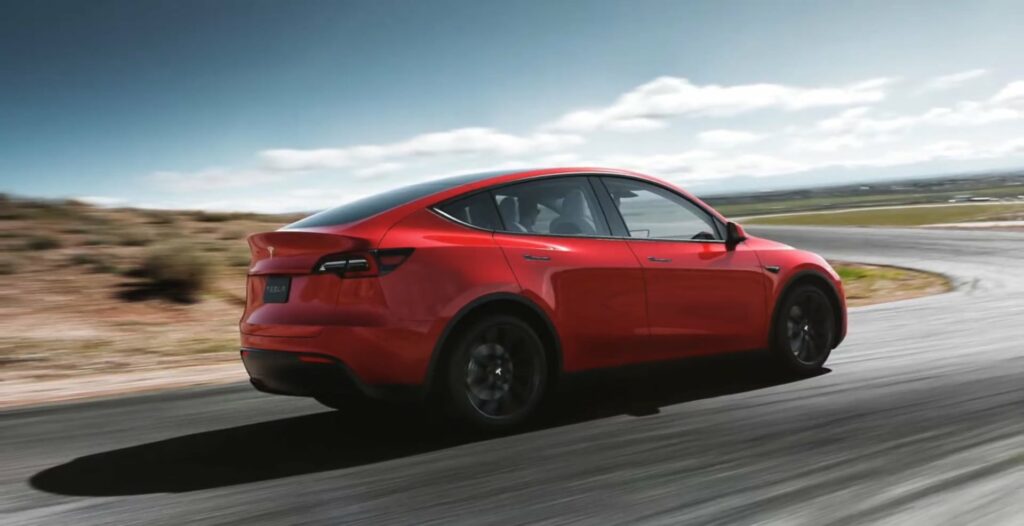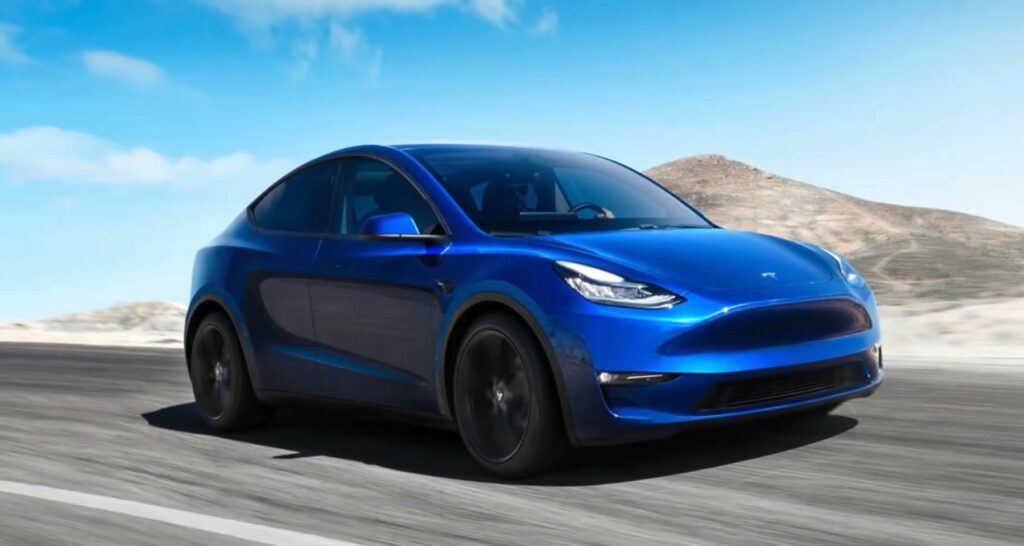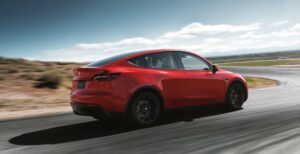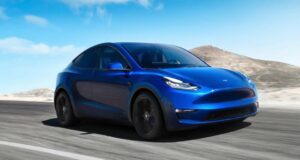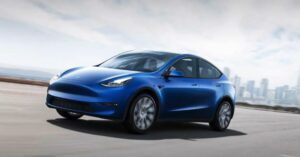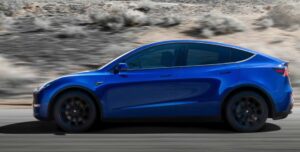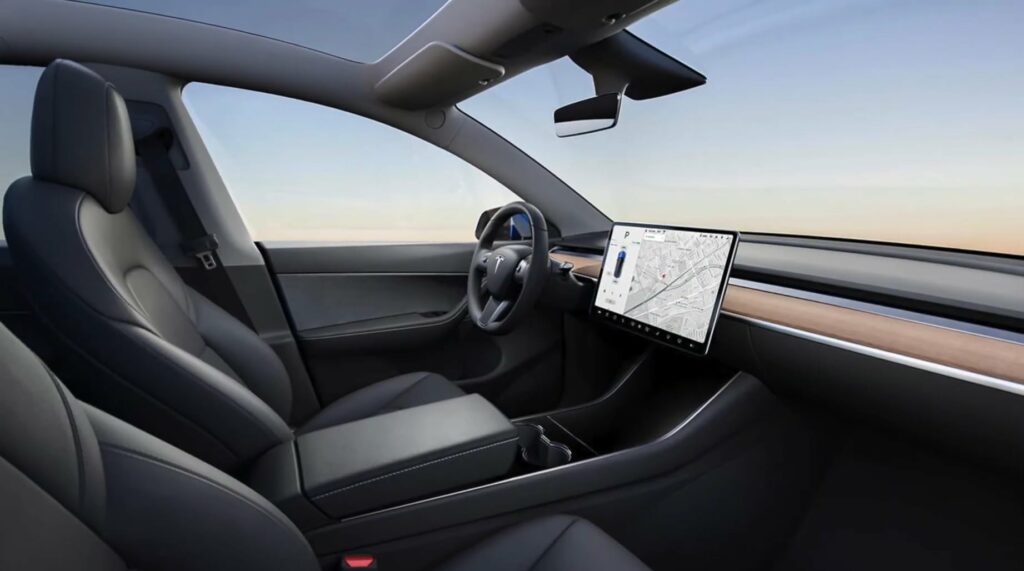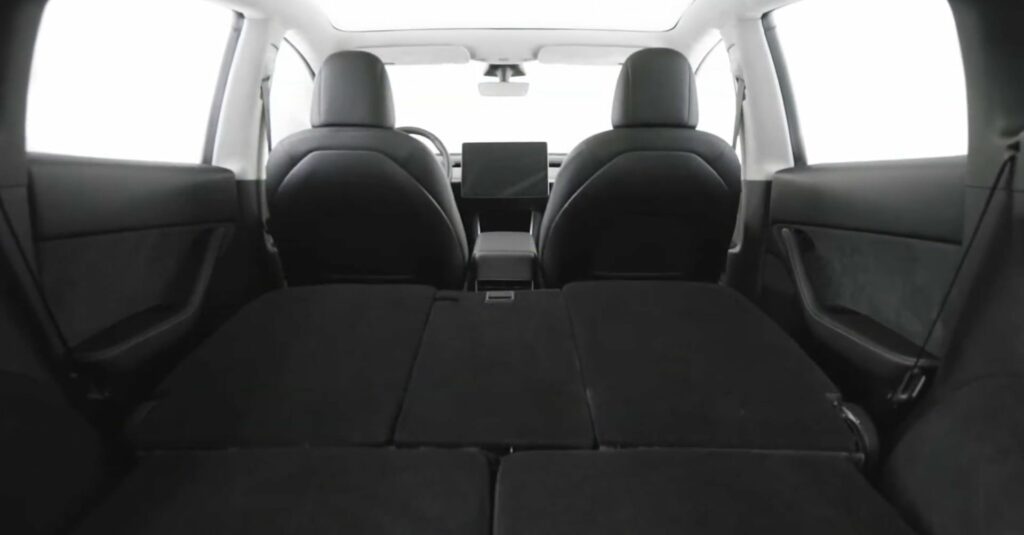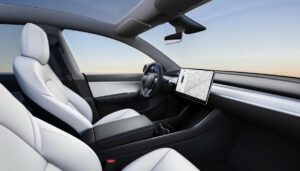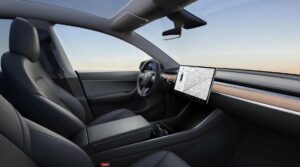Tesla Model Y Long Range Dual Motor
The Tesla Model Y Long Range Dual Motor is an all-electric crossover SUV that offers impressive performance, range, and versatility. Here are some key specs of the Tesla Model Y Long Range Dual Motor:
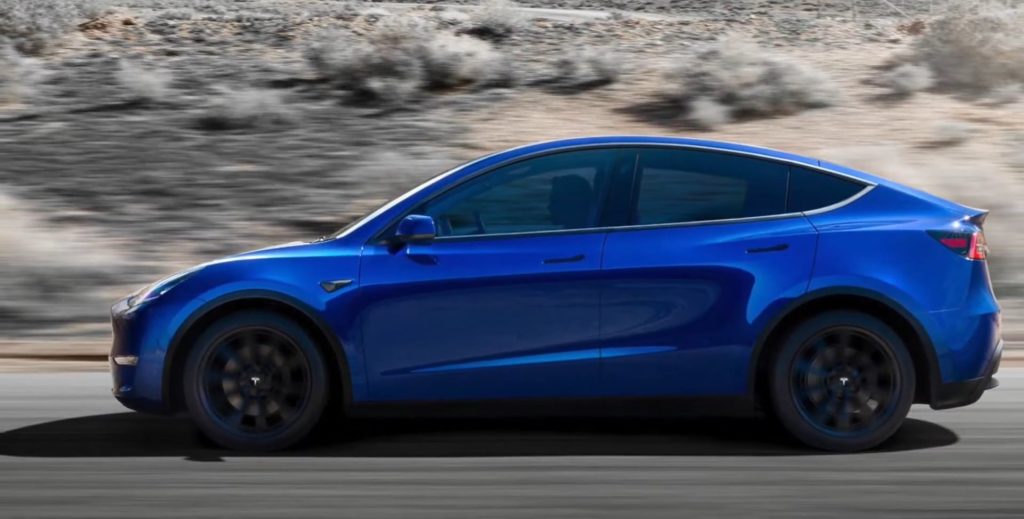
Acceleration: 100 km/h (0-60 mph) in 5.0 seconds
Top speed: 1217 km/h
Range: 410 km on a single charge
Motor: Dual electric motor all-wheel drive
Power output: 324 horsepower
Torque: 493 Nm
Battery: Long Range 75 kWh
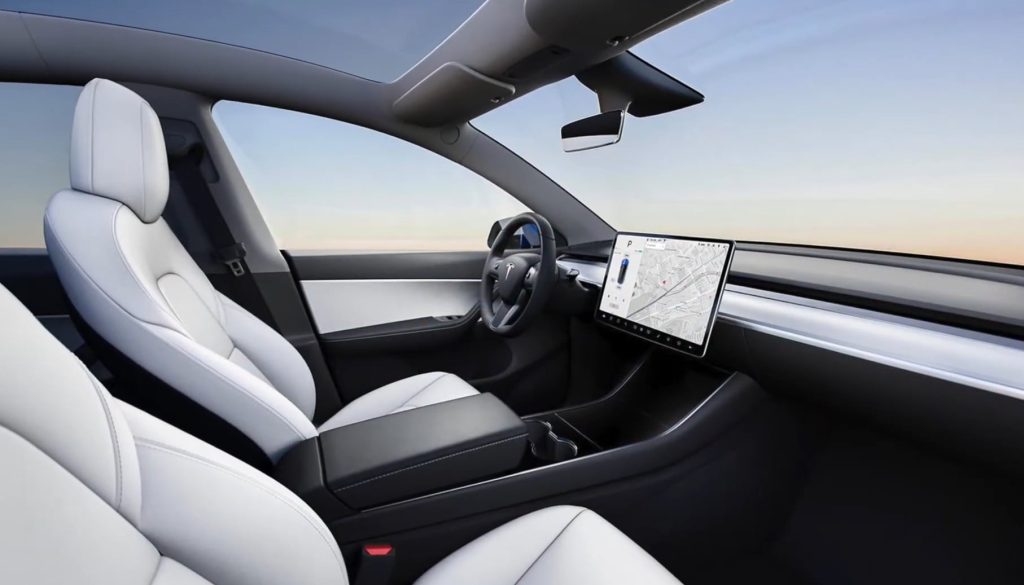
The Model Y Long Range Dual Motor also features a spacious and comfortable interior, with seating for up to seven passengers and ample cargo space. It comes with a range of advanced features, including Autopilot driver assistance, a large touchscreen display, and a premium sound system.
Overall, the Tesla Model Y Long Range Dual Motor is a versatile and practical electric vehicle that offers impressive performance and range. It is a popular choice for those who are looking for a family-friendly electric SUV that can handle a range of driving scenarios, from daily commutes to long road trips.
| Performance | |
| Acceleration 0 – 100 km/h | 5.0 sec |
| Top Speed | 217 km/h |
| Electric Range | 410 km |
| Total Power | 324 kW (441 PS) |
| Total Torque | 493 Nm |
| Drive | AWD |
| Battery and Charging | |
| Battery Capacity | 75.0 kWh |
| Battery Useable | 70.0 kWh |
| Europe | |
| Charge Port | Type 2 |
| Port Location | Left Side – Rear |
| Charge Power | 11 kW AC |
| Charge Time (0->410 km) | 7h30m |
| Charge Speed | 55 km/h |
| Fastcharge Port | CCS |
| FC Port Location | Left Side – Rear |
| Fastcharge Power (max) | 210 kW DC |
| Fastcharge Time (41->328 km) | 29 min |
| Fastcharge Speed | 590 km/h |
| Energy Consumption | |
| EVDB Real Range | |
| Range | 410 km |
| Vehicle Consumption | 171 Wh/km |
| CO2 Emissions | 0 g/km |
| Vehicle Fuel Equivalent | 1.9 l/100km |
| WLTP Ratings | |
| Range | 507 km |
| Rated Consumption | 169 Wh/km |
| Vehicle Consumption | 138 Wh/km |
| CO2 Emissions | 0 g/km |
| Rated Fuel Equivalent | 1.9 l/100km |
| Vehicle Fuel Equivalent | 1.6 l/100km |
|
Rated = official figures as published by manufacturer. Rated consumption and fuel equivalency figures include charging losses.
|
|
|
Vehicle = calculated battery energy consumption used by the vehicle for propulsion and on-board systems.
|
|
| Real Energy Consumption between 118 – 237 Wh/km | |
| City – Cold Weather | 177 Wh/km |
| Highway – Cold Weather | 237 Wh/km |
| Combined – Cold Weather | 203 Wh/km |
| City – Mild Weather | 118 Wh/km |
| Highway – Mild Weather | 182 Wh/km |
| Combined – Mild Weather | 147 Wh/km |
| Energy use for each trip will vary considerably depending on the driver and the conditions. Therefore, we have provided a range of estimates which can be useful in developing an understanding of the potential benefits of this technology. | |
| Dimensions and Weight | |
| Length | 4751 mm |
| Width | 1921 mm |
| Width with mirrors | 2129 mm |
| Height | 1624 mm |
| Wheelbase | 2890 mm |
| Weight Unladen (EU) | 2056 kg |
| Gross Vehicle Weight (GVWR) | 2371 kg |
| Max. Payload | 390 kg |
| Cargo Volume | 854 L |
| Cargo Volume Max | 2158 L |
| Cargo Volume Frunk | 117 L |
| Roof Load | 75 kg |
| Tow Hitch Possible | Yes |
| Towing Weight Unbraked | 750 kg |
| Towing Weight Braked | 1600 kg |
| Vertical Load Max | 72 kg |
| Miscellaneous | |
| Seats | 7 people |
| Isofix | Yes, 2 seats |
| Turning Circle | 12.1 m |
| Platform | TESLA 3/Y |
| Car Body | SUV |
| Segment | JD – Large |
| Roof Rails | No |
| EV Dedicated Platform | Yes |
Home and Destination Charging (0 -> 100%)
A public charging station is required to use the highest possible charging rate. The EVSE/charging station’s charging capacity affects how long it takes to fully charge the battery. The table below shows all possible options for fully charging the Tesla Model Y Long Range Dual Motor.
In Europe, plugging an electric car into an outlet is often as easy as plugging it into a household outlet, but there are differences from country to country. The table below shows the different ways to charge the Tesla Model Y Long Range Dual Motor, but in some countries some chargers may not be available.
Type 2 ( IEC 62196)

| Charging Point | Max. Power | Power | Time | Rate |
| Wall Plug (2.3 kW) | 230V / 1x10A | 2.3 kW | 36 hours | 11 km/h |
| 1-phase 16A (3.7 kW) | 230V / 1x16A | 3.7 kW | 22h15m | 18 km/h |
| 1-phase 32A (7.4 kW) | 230V / 1x32A | 7.4 kW | 11h15m | 36 km/h |
| 3-phase 16A (11 kW) | 400V / 3x16A | 11 kW | 7h30m | 55 km/h |
| 3-phase 32A (22 kW) | 400V / 3x16A | 11 kW | 7h30m | 55 km/h |
Fast Charging (10 -> 80%)
If you want to enjoy driving an electric car, one of the most important features to consider is the number of miles per hour the car can travel while charged. This is called the “range” of the car. All electric cars have a certain range, even if they are 100% charged. This is because they do not have an internal combustion engine to lean on if you need to drive a long distance.
Max. Power: The maximum power provided by the charging point
Avg. Power: The average power provided by the charging point during a session of 10% to 80%.
Time: the time it takes to charge from 10% to 80%
Speed: the average charging rate during the session of 10% to 80%
Combined Charging System (CCS Combo 2)
| Charging Point | Max. Power | Avg. Power | Time | Rate |
| CCS (50 kW DC) | 50 kW | 45 kW | 69 min | 250 km/h |
| Supercharger v2 Shared (75 kW DC) | 75 kW | 65 kW | 48 min | 350 km/h |
| Supercharger v2 (150 kW DC) | 150 kW | 95 kW | 33 min | 520 km/h |
| CCS (175 kW DC) | 175 kW | 100 kW | 31 min | 550 km/h |
| Supercharger v3 (250 kW DC) | 210 kW | 108 kW | 29 min | 590 km/h |
| CCS (350 kW DC) | 210 kW | 108 kW | 29 min | 590 km/h |
| Brand | Tesla |
| Model | Model Y Long Range Dual Motor |
| Body Style | SUV |
| Car Engine | electric |
| Motor power | 324 |
| Maximum Torque, Nm | 493 |
| Battery Energy, kWh | 75.0 |
| Power reserve (NEDC/EPA/WLTP), km | - / - / 410 |
| Level Charging (230/400/DC), hours | - / 7.3 / 0.29 |
| Electrical Acceleration, 0-100 km/h (0-62.1 mph) in sec | 5.0 |
| Top Speed, km/h | 217 |
